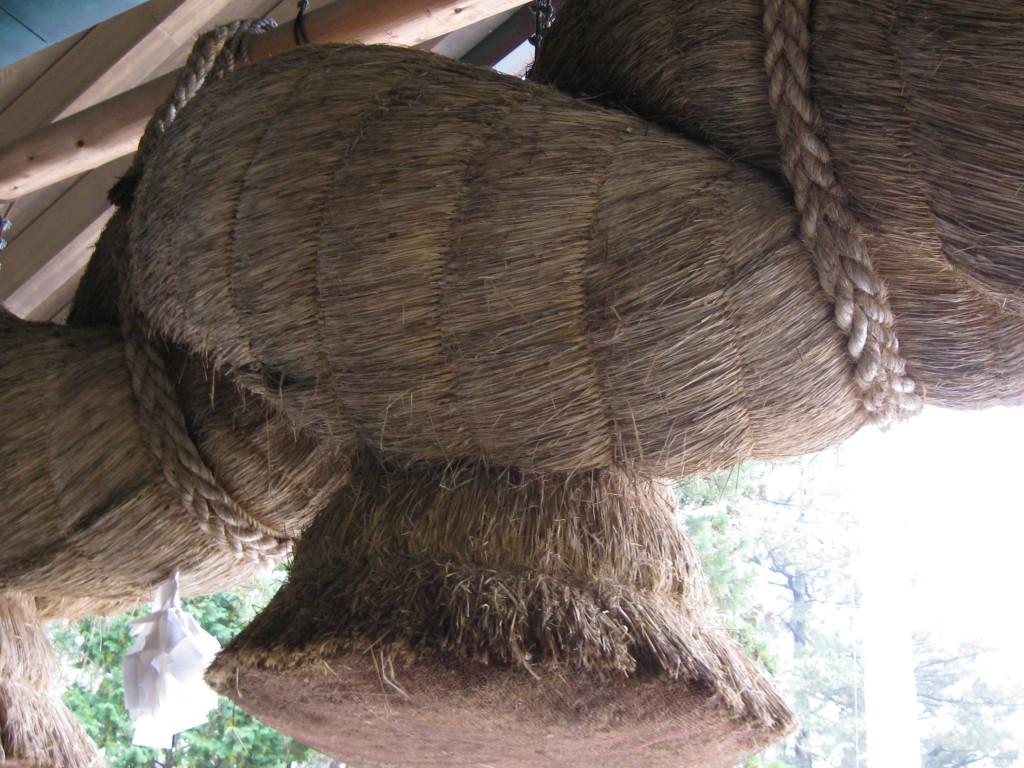
A close-up study of Izumo's rice-rope, largest of its type in the world
An interesting review by Green Shinto friend Aike Rots has appeared of a dissertation that focusses on Izumo Taisha and its role in the development of modern Shinto. The shrine remains a significant institution, though as the review below makes clear its role might have been all the greater but for the emphasis given to Ise by the Meiji imperialists.
What follows is an abridged and slightly modified version of the review. Those wishing to read the full review can do so at this link: http://dissertationreviews.org/archives/8209
*****************************************************
Aike Rots – A review of Gods Without Names: The Genesis of Modern Shinto in Nineteenth Century Japan, by Yijiang Zhong.
Until fairly recently, scholarly works on Shinto were few and far between. It was not until the 1990s that a generation of critical historians started taking kami worship seriously as a field of study. Drawing on the groundbreaking work of the Japanese historian Kuroda Toshio, scholars such as John Breen, Alan Grapard, Fabio Rambelli, Mark Teeuwen and Sarah Thal have challenged the dominant “emic” paradigm, which states that Shinto is the ancient, indigenous worship tradition of Japan.
Instead, they have studied local traditions of kami worship in relation to the Buddhist and Confucian institutions and ideologies with which they were historically intertwined, and shown that “Shinto” is an abstract concept that has been subject to various transformations in the course of its history. As their works make clear, the configuration of Shinto as an independent, “indigenous” ritual tradition in the early modern period was closely related to the development of the modern nation-state, and as such deeply political.
In line with this scholarly development, several studies have been published that trace the history of one particular shrine (or shrine-temple complex). Examples include Alan Grapard, The Protocol of the Gods: A Study of the Kasuga Cult in Japanese History; Max Moerman, Localizing Paradise: Kumano Pilgrimage and the Religious Landscape of Premodern Japan; Sarah Thal, Rearranging the Landscape of the Gods: The Politics of a Pilgrimage Site in Japan, 1573-1912.
Yijiang Zhong’s PhD dissertation, Gods Without Names, is the first book-length English-language study of Izumo Taisha and its mythology… Gods Without Names is more than just another historical account of an individual shrine, however. It is also an illuminating study of the development of kokugaku and related currents of thought in the Edo period, and it demonstrates how these different ideological stances were co-constitutive for the establishment of Shinto as the national imperial cult in the Meiji period.
Zhong’s dissertation consists of five chapters. In the first chapter, he describes how in the second half of the seventeenth century Izumo Taisha was transformed from a place of worship deeply intertwined with Buddhism into a self-consciously “Shinto” institution. In other words, Izumo Taisha was one of the first shrines in the country that was dissociated from Buddhism both institutionally and theologically.
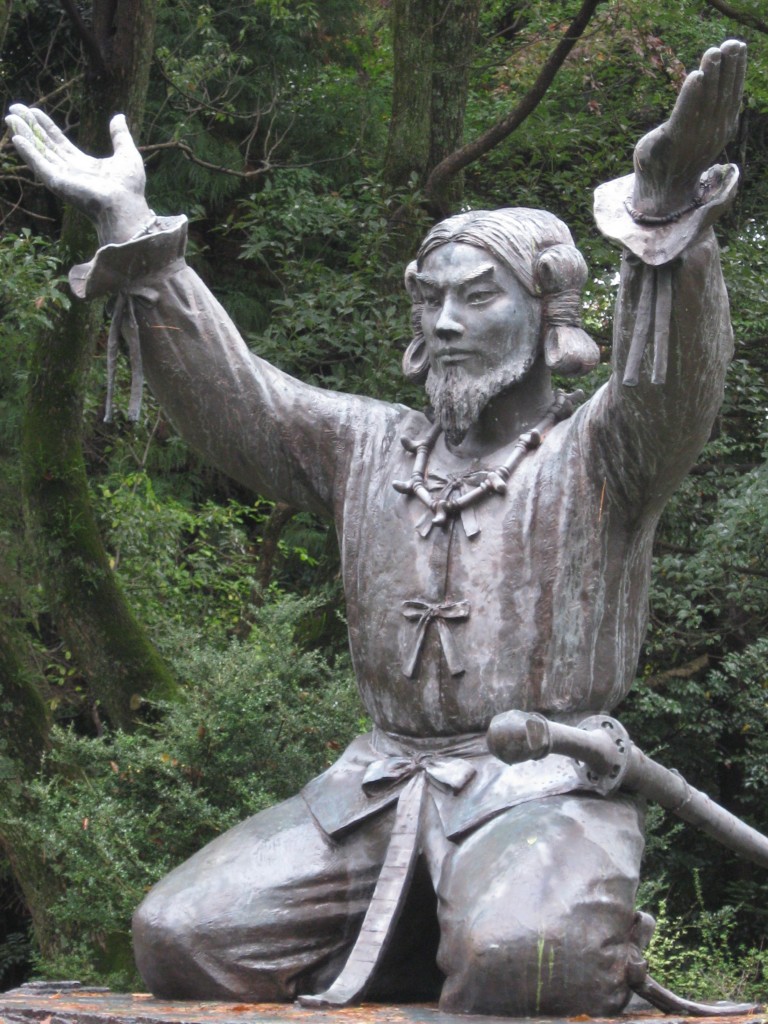
Okuninushi statue in front of Izumo Taisha
In the course of the Edo period, Ōkuninushi gradually gained popularity as “the Shinto god of creation, protection and fortune” (p. 78). In the second chapter, Zhong discusses this development, the main cause of which was a dramatic change in shrine funding. As much of the shrine’s land was confiscated in the late sixteenth century, it had to look for alternative sources of income. These came from the popular proselytisation activities of Izumo priests throughout the country. During this period, the notion that in the tenth month of the year all Japanese kami come together in Izumo for their annual meeting spread throughout the country, greatly contributing to Izumo’s popular appeal.
Meanwhile, the power of Ōkuninushi as the god of Creation was asserted. Moreover, he and his son Kotoshironushi were identified with two highly popular deities of good fortune, Daikoku (Mahākāla) and Ebisu. It was during the Edo period, then, that Izumo Taisha gained nationwide popularity as one of the main shrines associated with divine protection and good fortune (including love as well as success in business).
In Chapter 3 Zhong proceeds to discuss the impact of Nativist (kokugaku) ideology on the development of Izumo Taisha in the late Edo period, and examines various ways in which the powerful deity Ōkuninushi was appropriated by kokugaku scholars. … In particular, Ōkuninushi was of great importance for Hirata, who placed him in the centre of his Shinto pantheon. As Zhong makes clear, Hirata’s ideology thus “provided Izumo priests a directly empowering Shinto discourse to represent Ōkuninushi and the god’s priest as the anchor of Japan”.
However, Ōkuninushi was not the only powerful deity believed to be intimately intertwined with the nation as a whole. In the nineteenth century, the Ise-based cult of Amaterasu – who, significantly, was seen as the ancestral deity of Japan’s imperial family – also took on nationwide importance, and was appropriated for ideological purposes.
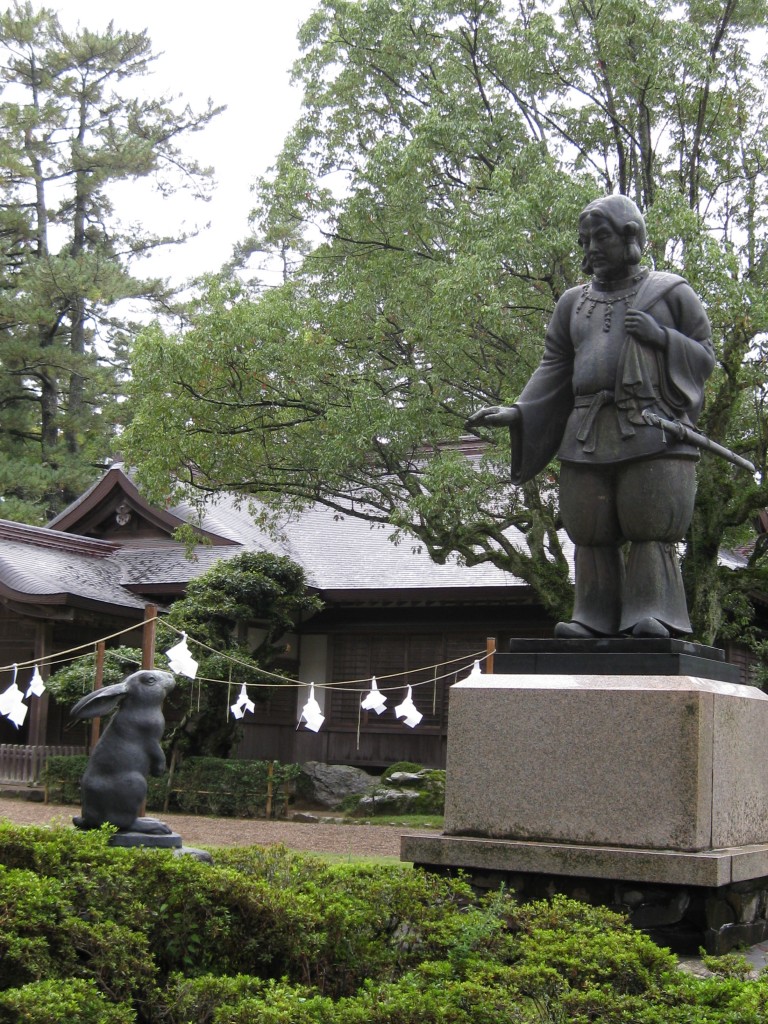
Okuninushi and the White Hare of Inaba that he rescued
In Chapter 4, Zhong examines the tensions that emerged between Ise- and Izumo-related ideologues in the mid-nineteenth century, against the background of the confrontation with foreign powers in this period (and, more in particular, the perceived threat of Christianity). He discusses the attempts by Aizawa Seishisai (1782-1863) and Ōkuni Takamasa (1792-1871) to reconstruct Shinto as a “modern” ideology capable of competing with Christianity, and shows how their works influenced early-Meiji reconfigurations of “Shinto,” “religion” and the state.
Finally, in Chapter 5, Zhong describes how in the early Meiji period the tensions between the Ise and Izumo factions gradually escalated, until they finally culminated in the “enshrinement debate” (saijin ronsō) of 1880-1881. Although the Izumo priests wanted Ōkuninushi to be on top of the national pantheon alongside Amaterasu, their proposals were rejected by the powerful Ise priests. As a consequence of Izumo’s defeat, Ise and its goddess became a core aspect of the imperial cult later known as “State Shinto,” whereas the worship traditions of Izumo were incorporated into a newly established private religious institution.
In this period “Shrine Shinto” was configured as a “non-religious” public ritual cult, centered around the emperor and the Sun Goddess. Shrines were redefined as public ritual places rather than private religious institutions – with the exception of the twelve “Sect Shinto” (kyōha shintō) institutions that came to be legally and politically defined as “religions.” Thus, “Ōkuninushi remained the ‘Great Pillar of the Land’ but that status was transformed to private religious belief, against the public and political status of the Sun Goddess”).
As said, Gods Without Names constitutes an important new contribution to the young field of Shinto studies. Drawing on a wide range of relevant primary sources, it sheds new light on the development of both kokugaku thought and Meiji-period “State Shinto.” Moreover, it gives an informative account of the (early) modern history of Izumo Taisha and its main deity, Ōkuninushi. Hence, I wholeheartedly recommend it to anybody interested in the history of Japanese religion, ideology, and mythology.
Aike P. Rots
Department of Culture Studies and Oriental Languages
University of Oslo
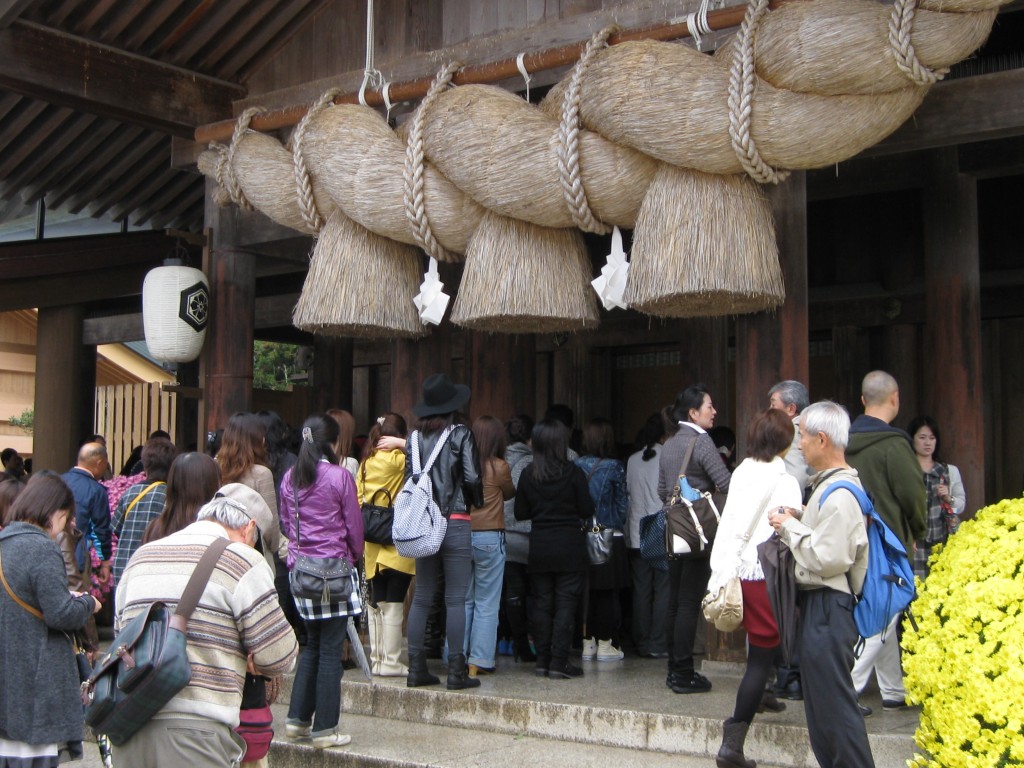
Lining up to pay respects beneath the giant shimenawa rope at Izumo

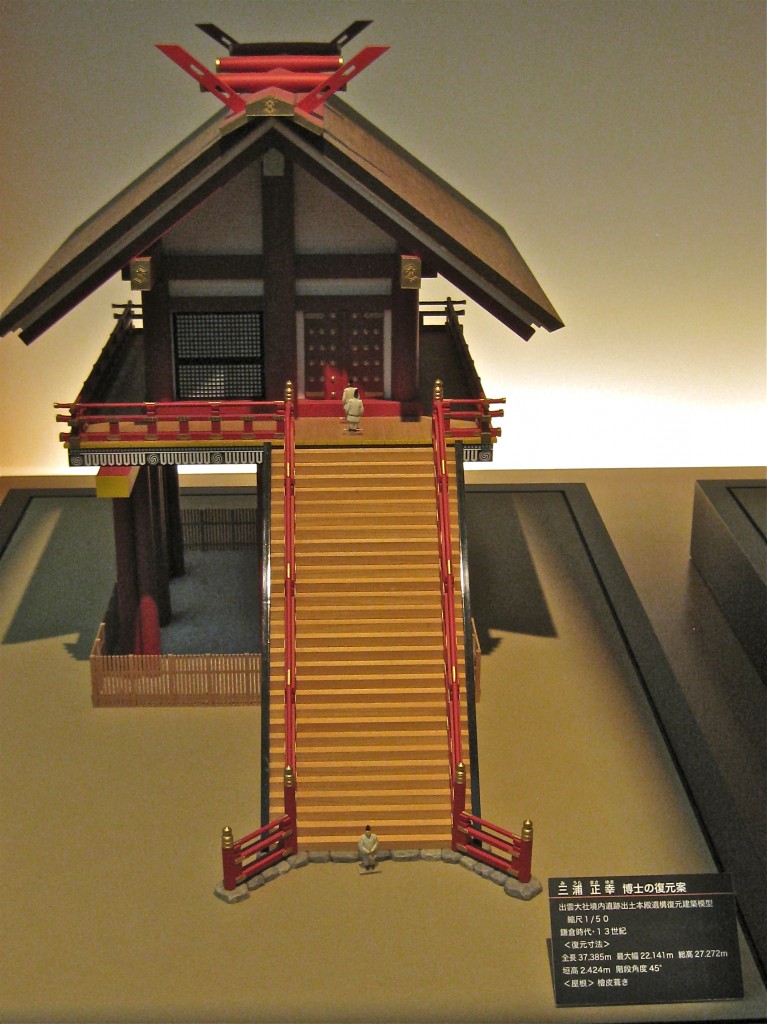
For years Ive been saying that Izumo Taisha originally enshrined Susanoo….finally an academic has put it into print. If you can get beyond the yamatocentric myths then Susanoo appears as a far more powerful and wide ranging kami in ancient Japanese history than Amaterasu.